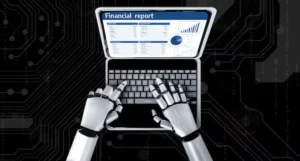The Technology Blog

Predictive Analytics Shaping the Future of Student Success
Education is no longer a one-size-fits-all journey. With more diverse students and changing learning spaces, old ways of measuring academic success are not enough. Predictive analytics is changing AI education. It helps teachers understand and improve student performance. This way, they can spot issues before they become problems.
Schools and universities are using real-time and past data. This shift helps them move from reactive support to proactive strategies. Instead of waiting for exam results to spot learning gaps, schools can now use data insights. This helps them act early, customise learning paths, and improve results for everyone.
This article looks at how predictive analytics is changing education. We’ll talk about the technologies driving this change. Also, we’ll explore how schools can use these tools wisely to help students succeed.
What Is Predictive Analytics in Education?
Predictive analytics uses statistics, data mining, and machine learning. It forecasts future outcomes from current and past data.
In education, this means collecting and analysing data such as attendance, assignment submissions, engagement patterns, demographics, and grades. This helps predict how students will perform and what support they might need.
Core Capabilities Include:
- Identifying at-risk students before they fail
- Forecasting grades or course completion likelihood
- Personalising learning recommendations
- Guiding academic advising and resource allocation
- Enhancing institutional decision-making
When aligned with human insight and ethical safeguards, predictive analytics becomes a powerful ally in fostering long-term student success.
The Need for Data-Driven Education
Education systems face growing pressure to keep students enrolled, increase graduation rates, and equip them for a fast-changing job market. Traditional approaches—midterm warnings, end-of-term grades, and one-size-fits-all curricula—often miss the nuances of student needs.
Challenges Predictive Analytics Can Address:
- Rising dropout rates, particularly in higher education
- Limited academic advising bandwidth
- Inadequate personalisation in large classrooms
- Delayed identification of learning difficulties
- Difficulty in evaluating the effectiveness of teaching methods
AI education tools that analyse data in real-time help schools find patterns early. This way, they can act before a student faces a crisis.

How Predictive Analytics Supports Student Success
1. Early Identification of At-Risk Students
Predictive models can spot students at risk of academic struggle. They look for signs like poor attendance, missed assignments, or low engagement. This can happen weeks or even months before their performance clearly declines.
Georgia State University cut dropout rates by 30%. They used predictive analytics for over 200,000 student interventions each year.
2. Personalised Learning Pathways
Predictive tools can help by understanding how each student learns. They can offer resources, modify pacing, or suggest subjects that match a student’s strengths and weaknesses.
Students get content that matches their learning style and improves their progress.
3. Improved Academic Advising
AI-powered dashboards help advisors concentrate on students who need timely support. Advisors can use these insights to help with course selection and skill development.
4. Curriculum Design and Teaching Optimisation
Educators can see which teaching methods work well and where students have trouble. This feedback loop helps refine instructional approaches in real time.
Departments can assess the effectiveness of new content delivery methods (e.g. flipped classrooms, hybrid learning) using student data.
Technologies Enabling Predictive Analytics in Education
Several technologies and platforms power the predictive revolution in education:
A. Learning Management Systems (LMS)
Modern LMS platforms like Moodle, Canvas, and Blackboard gather a lot of data on user behaviour. This includes logins, clicks, time spent on pages, and quiz scores. This data can then be used in predictive models.

B. Student Information Systems (SIS)
SIS platforms hold organised academic data like attendance, GPA, and course enrolment. They often work with predictive analytics engines.
C. AI-Powered Analytics Tools
Platforms such as Civitas Learning, Ellucian, and IBM Watson Education use machine learning. They create real-time forecasts about student risk and success.
D. Natural Language Processing (NLP)
AI systems can analyse written assignments or forum posts for sentiment, engagement, and confusion. This offers new insights.
Real-World Use Cases
1. Purdue University – Course Signals
Purdue created a system that uses demographic and performance data. It assigns “traffic light” risk levels to students. Green means on track; red signals a high dropout risk.
Outcome: The system helped increase course completion rates and overall student satisfaction.
2. Arizona State University – eAdvisor
eAdvisor uses analytics to help students choose majors that match their strengths and career goals. It flags when students veer off track, allowing for timely redirection.
Benefit: Faster graduation and better match between student interests and study paths.
3. UK’s Jisc Learning Analytics Service
Many British universities now use the Jisc framework. They create dashboards, heat maps, and success predictors from data collected across the institution.
Impact: Improved institutional accountability and learner support at scale.
Ethical Considerations and Challenges
Despite its promise, predictive analytics in education is not without controversy. Using personal and behavioural data brings up key issues like consent, transparency, and bias.
Key Ethical Challenges:
- Privacy: Are students aware of what data is being collected and how it is used?
- Bias: Could algorithms reinforce existing inequalities (e.g., socioeconomic or racial)?
- Autonomy: Might predictions limit students’ freedom to explore less “optimal” paths?
- Transparency: Are educators and students given clear, understandable insights?
Best practices:
- Use anonymised or aggregated data wherever possible.
- Make analytics insights available to students as well as staff.
- Regularly audit algorithms for fairness and inclusivity.
Future Outlook: AI and the Next Generation of Learning
As AI education tools grow, predictive systems will likely become stronger and more refined.
Steps for Institutions Looking to Adopt Predictive Analytics
- Define Clear Goals: Decide if you want to focus on retention, improving grades, or allocating resources.
- Ensure Data Quality: Clean, consistent data across platforms is essential for reliable insights.
- Invest in training: Help staff interpret analytics meaningfully—not just use dashboards.
- Engage Stakeholders Early: Involve faculty, students, IT, and admin in the development process.
- Begin with a small test: Use predictive tools in one department or course. After that, you can roll them out more widely.
Educating Smarter with Predictive Insight
Education is about potential. It unlocks, nurtures, and helps it grow. Predictive analytics gives us tools to understand student journeys better. Now, we can support them in smarter and more personalised ways.
By using AI education wisely and ethically, schools can shift from crisis mode to proactive support. This way, every student gets the chance to succeed, not just those who ask for help.
Act now: If you’re a teacher or administrator, look at the predictive tools your systems offer. If you’re a policymaker or technologist, push for solutions that focus on performance and protection.









